Honghui Xu
DP-FedLoRA: Privacy-Enhanced Federated Fine-Tuning for On-Device Large Language Models
Sep 11, 2025Abstract:As on-device large language model (LLM) systems become increasingly prevalent, federated fine-tuning enables advanced language understanding and generation directly on edge devices; however, it also involves processing sensitive, user-specific data, raising significant privacy concerns within the federated learning framework. To address these challenges, we propose DP-FedLoRA, a privacy-enhanced federated fine-tuning framework that integrates LoRA-based adaptation with differential privacy in a communication-efficient setting. Each client locally clips and perturbs its LoRA matrices using Gaussian noise to satisfy ($\epsilon$, $\delta$)-differential privacy. We further provide a theoretical analysis demonstrating the unbiased nature of the updates and deriving bounds on the variance introduced by noise, offering practical guidance for privacy-budget calibration. Experimental results across mainstream benchmarks show that DP-FedLoRA delivers competitive performance while offering strong privacy guarantees, paving the way for scalable and privacy-preserving LLM deployment in on-device environments.
C3S3: Complementary Competition and Contrastive Selection for Semi-Supervised Medical Image Segmentation
Jun 09, 2025Abstract:For the immanent challenge of insufficiently annotated samples in the medical field, semi-supervised medical image segmentation (SSMIS) offers a promising solution. Despite achieving impressive results in delineating primary target areas, most current methodologies struggle to precisely capture the subtle details of boundaries. This deficiency often leads to significant diagnostic inaccuracies. To tackle this issue, we introduce C3S3, a novel semi-supervised segmentation model that synergistically integrates complementary competition and contrastive selection. This design significantly sharpens boundary delineation and enhances overall precision. Specifically, we develop an $\textit{Outcome-Driven Contrastive Learning}$ module dedicated to refining boundary localization. Additionally, we incorporate a $\textit{Dynamic Complementary Competition}$ module that leverages two high-performing sub-networks to generate pseudo-labels, thereby further improving segmentation quality. The proposed C3S3 undergoes rigorous validation on two publicly accessible datasets, encompassing the practices of both MRI and CT scans. The results demonstrate that our method achieves superior performance compared to previous cutting-edge competitors. Especially, on the 95HD and ASD metrics, our approach achieves a notable improvement of at least $6\%$, highlighting the significant advancements. The code is available at https://github.com/Y-TARL/C3S3.
Security Risks Concerns of Generative AI in the IoT
Mar 29, 2024Abstract:In an era where the Internet of Things (IoT) intersects increasingly with generative Artificial Intelligence (AI), this article scrutinizes the emergent security risks inherent in this integration. We explore how generative AI drives innovation in IoT and we analyze the potential for data breaches when using generative AI and the misuse of generative AI technologies in IoT ecosystems. These risks not only threaten the privacy and efficiency of IoT systems but also pose broader implications for trust and safety in AI-driven environments. The discussion in this article extends to strategic approaches for mitigating these risks, including the development of robust security protocols, the multi-layered security approaches, and the adoption of AI technological solutions. Through a comprehensive analysis, this article aims to shed light on the critical balance between embracing AI advancements and ensuring stringent security in IoT, providing insights into the future direction of these intertwined technologies.
GA-HQS: MRI reconstruction via a generically accelerated unfolding approach
Apr 06, 2023



Abstract:Deep unfolding networks (DUNs) are the foremost methods in the realm of compressed sensing MRI, as they can employ learnable networks to facilitate interpretable forward-inference operators. However, several daunting issues still exist, including the heavy dependency on the first-order optimization algorithms, the insufficient information fusion mechanisms, and the limitation of capturing long-range relationships. To address the issues, we propose a Generically Accelerated Half-Quadratic Splitting (GA-HQS) algorithm that incorporates second-order gradient information and pyramid attention modules for the delicate fusion of inputs at the pixel level. Moreover, a multi-scale split transformer is also designed to enhance the global feature representation. Comprehensive experiments demonstrate that our method surpasses previous ones on single-coil MRI acceleration tasks.
Generative Adversarial Networks: A Survey Towards Private and Secure Applications
Jun 07, 2021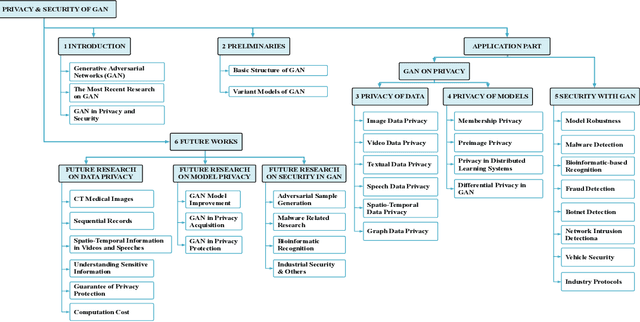
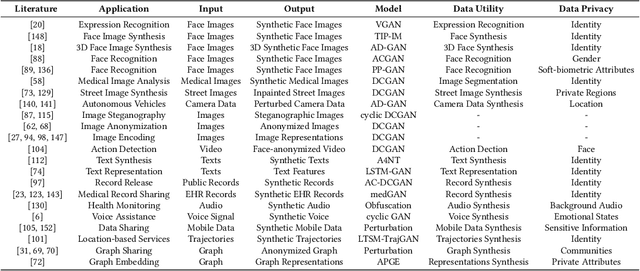

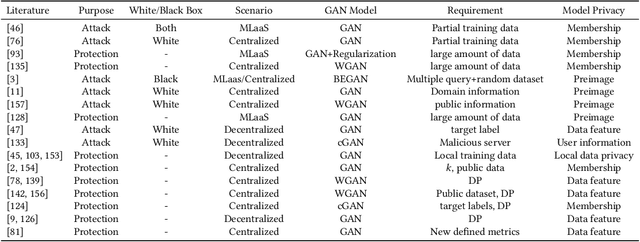
Abstract:Generative Adversarial Networks (GAN) have promoted a variety of applications in computer vision, natural language processing, etc. due to its generative model's compelling ability to generate realistic examples plausibly drawn from an existing distribution of samples. GAN not only provides impressive performance on data generation-based tasks but also stimulates fertilization for privacy and security oriented research because of its game theoretic optimization strategy. Unfortunately, there are no comprehensive surveys on GAN in privacy and security, which motivates this survey paper to summarize those state-of-the-art works systematically. The existing works are classified into proper categories based on privacy and security functions, and this survey paper conducts a comprehensive analysis of their advantages and drawbacks. Considering that GAN in privacy and security is still at a very initial stage and has imposed unique challenges that are yet to be well addressed, this paper also sheds light on some potential privacy and security applications with GAN and elaborates on some future research directions.
Clustering with Similarity Preserving
May 21, 2019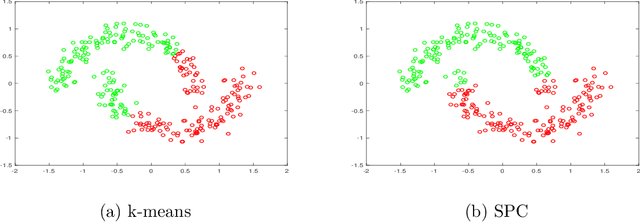
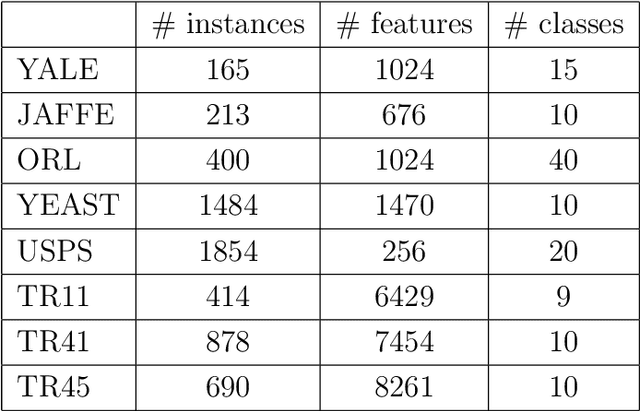
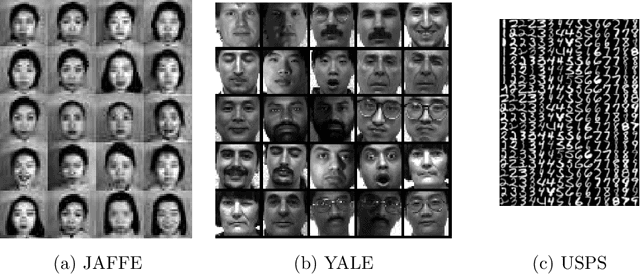
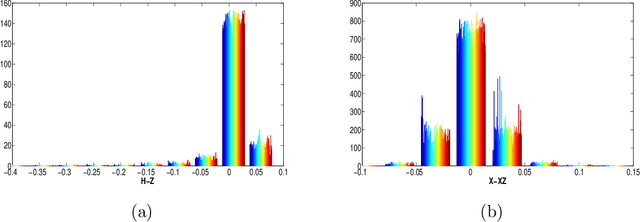
Abstract:Graph-based clustering has shown promising performance in many tasks. A key step of graph-based approach is the similarity graph construction. In general, learning graph in kernel space can enhance clustering accuracy due to the incorporation of nonlinearity. However, most existing kernel-based graph learning mechanisms is not similarity-preserving, hence leads to sub-optimal performance. To overcome this drawback, we propose a more discriminative graph learning method which can preserve the pairwise similarities between samples in an adaptive manner for the first time. Specifically, we require the learned graph be close to a kernel matrix, which serves as a measure of similarity in raw data. Moreover, the structure is adaptively tuned so that the number of connected components of the graph is exactly equal to the number of clusters. Finally, our method unifies clustering and graph learning which can directly obtain cluster indicators from the graph itself without performing further clustering step. The effectiveness of this approach is examined on both single and multiple kernel learning scenarios in several datasets.
 Add to Chrome
Add to Chrome Add to Firefox
Add to Firefox Add to Edge
Add to Edge